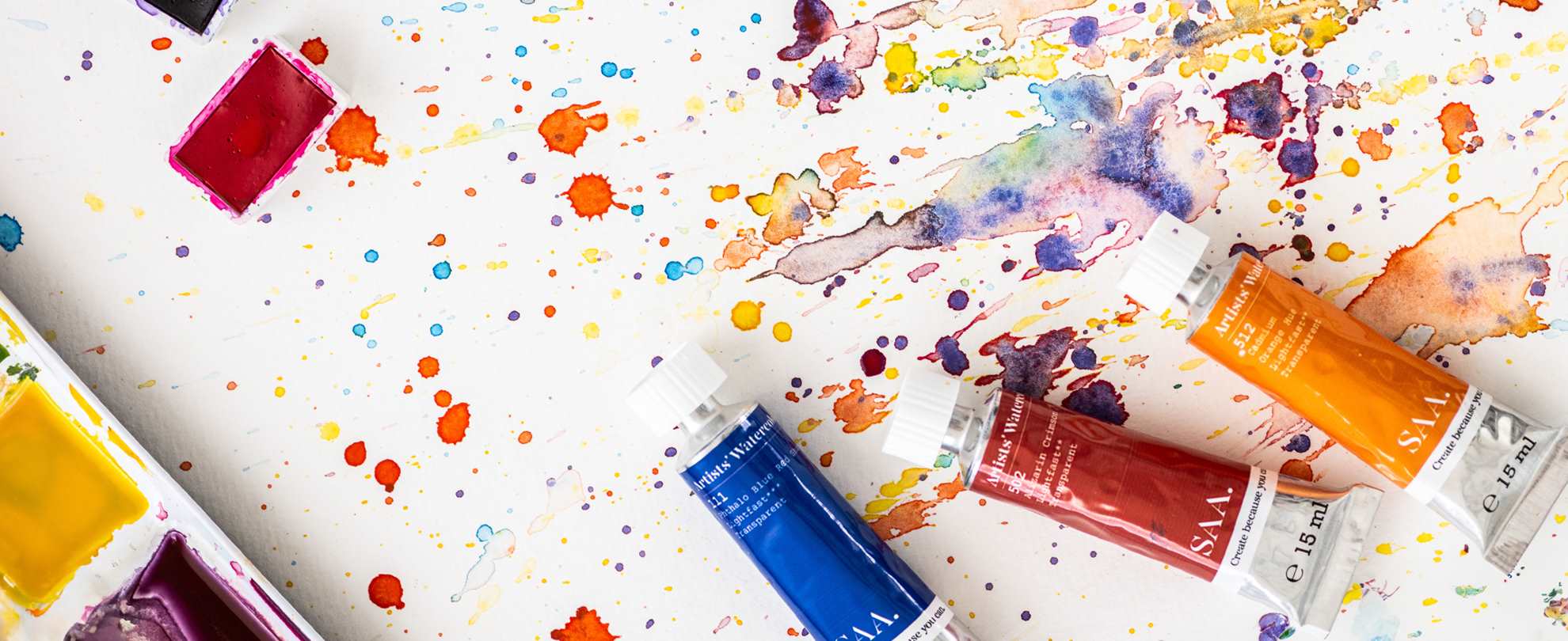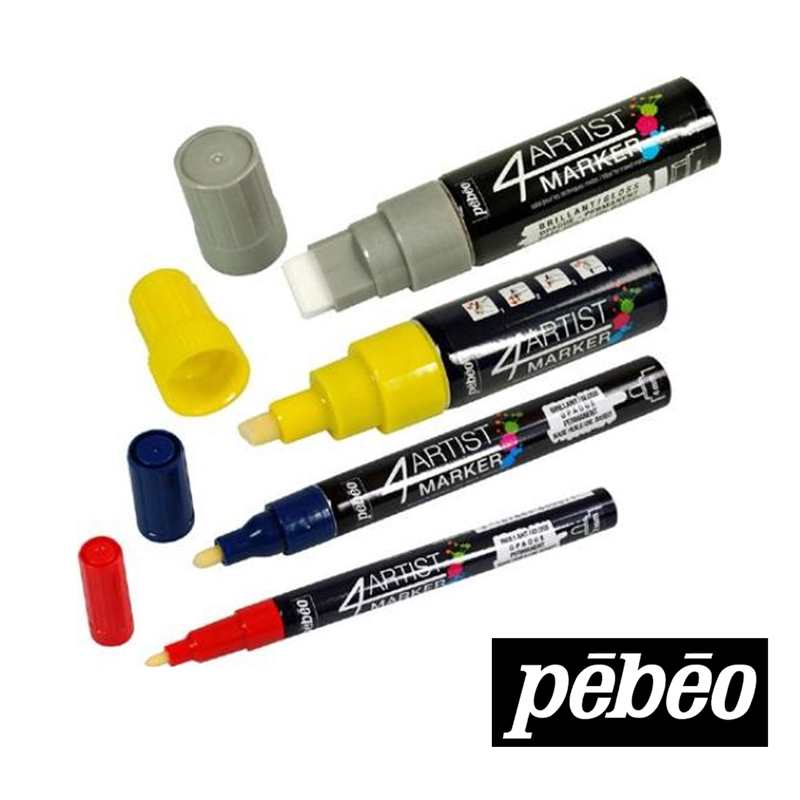

Brief History
The humble pen has been a significant tool throughout history from recording historic events, drafting and signing world changing documents or manuscripts, used to create classic literature or musical scores and creating beautiful sketches or drawing plans for inspirational buildings.
Humans have recorded what is happening around them for millennia from cave paintings and carvings through to scoring early letter forms into rocks or tablets. As the written language develop used became more accessible and precise. The earliest pens which were dipped into ink were made of bamboo reeds cut to shape used by early Egyptian scribes as early as the 4th century BC, previously written documents have been created using brushes. Reed pens were used for centuries with little change and around the 7th century AD saw the use of the quill pen made from feathers of large birds like geese or swans which offered a smoother line, though the reed pen continued to be popular into the Middle Ages.
The use of the quill pens remained unchanged until the early 18th century AD when modern metal nibbed pens began to appear, this is not a new concept as a copper pen tip was found in the ruins of Pompeii buried under volcanic ash and pumice after the eruption of Mount Vesuvius in AD 79. The first pens were mass produced by machine by John Mitchell of Birmingham in 1822, offering a cleaner more consistent line, the dip pen which is still used today was born.

Dip pen
Holders and nibs - the dip pen, consists of a handle with interchangeable nibs that can be slotted into the pen holder and can be used with a large variety of different inks . The action of dipping your pen into the ink and the first mark is part of the whole experience of using a dip pen with its sometimes-unexpected scratchy ink flow and ink running out during making makes these a versatile tool which can be used with a variety of Drawing inks, Calligraphy ink, acrylic inks, and Gouache, having its own character and can be either pigment or dye based, water proof or water-soluble and classic black /sepia or many colours.
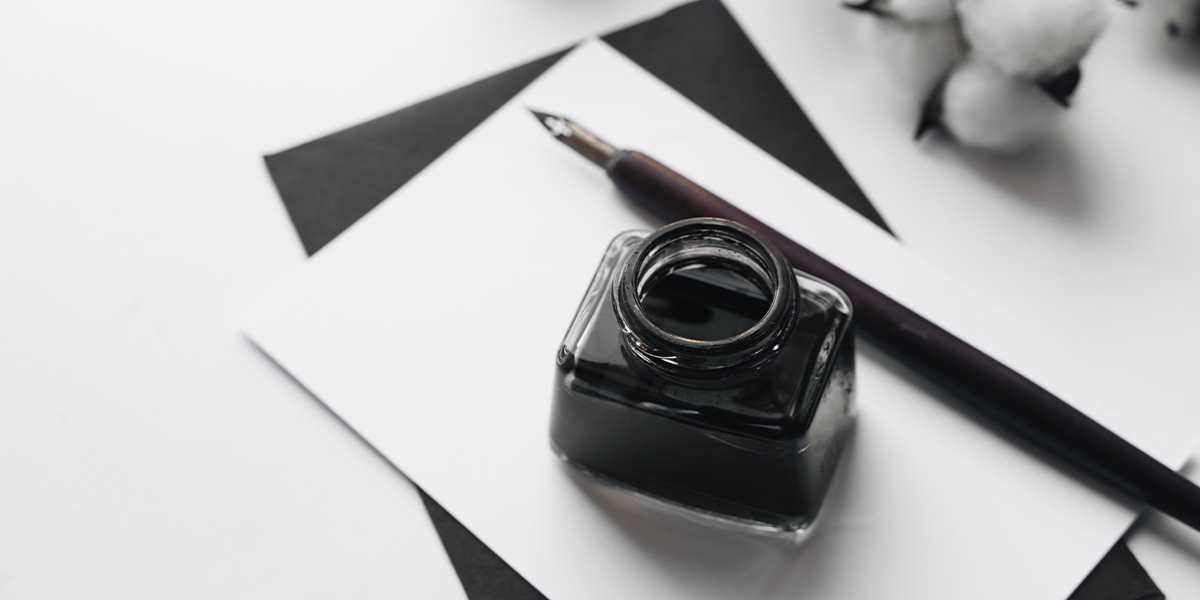

Ruling pens
These were used as drafting pens for technical drawing and cartography and like the dip pen, they need to be dipped into the ink. Consisting of a handle with a pair of adjustable metal blades or points between which the ink is contained. The screw at the side can be used to widen or narrow the space between the points altering the line width.
Ruling pens are still used by artists but as technical pens, they have been replaced by more modern Drawing or technical pens that contain the ink internally and offer a more consistent cleaner line
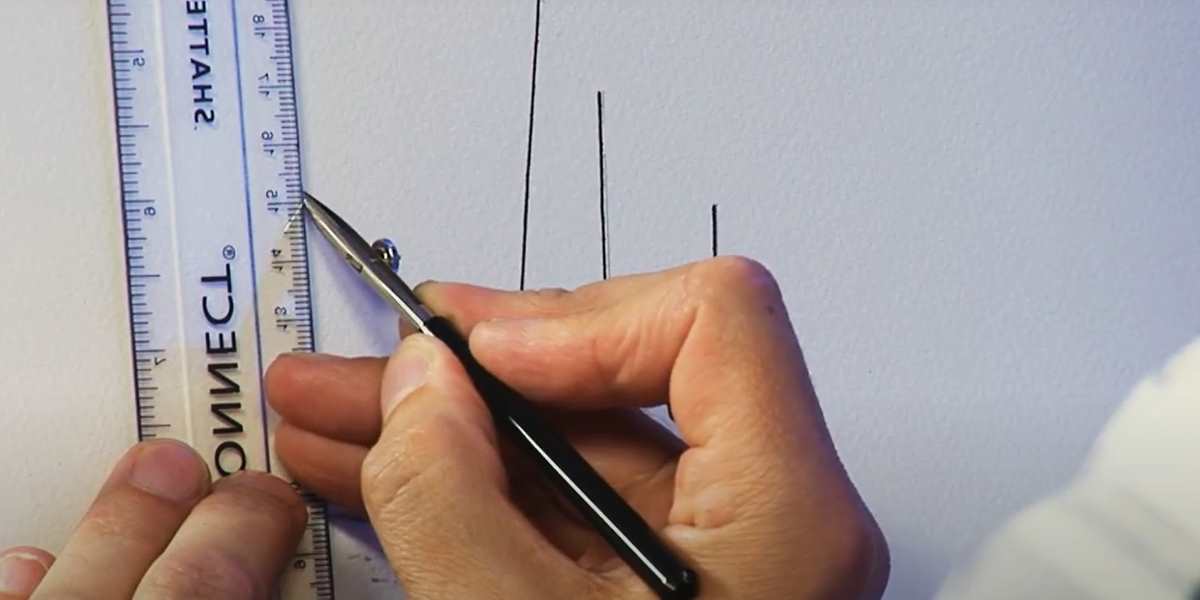

Painting pens
Paint pens are versatile pens. They may be acrylic, or solvent based but they offer the opportunity to work on many more surfaces other than paper. They are opaque, the colours will cover the one beneath or work perfectly on a coloured background as well as Wood, Cardboard, Canvas, textile, metal, pottery, plastic, stone and rubber. They range from a fine Japanese nib to a broad chisel nib.
The water based acrylic pens dry quickly to a permanent finish but while they are still wet, they can be moved and blended with water. These have high lightfast ratings and do not bleed or feather on the paper.
EGS: Derwent Line Painters, Posca pens, Pinor
Solvent based markers are oil based and take around 5-15 mins to dry to a permanent finish (depending on how porous the surface is and the thickness of application.) They dry to a glossy, opaque and highly pigmented finish and while the ink is still wet the colours can be mixed together on a non-porous surface. A mineral spirit may be used to dilute the colour or for blending and glazing or the ink can be removed from a smooth non-porous surface using a minerals spirit. These pens can be applied to most surfaces including canvas, paper, plastic, wood, metal, porcelain and can be applied over the top of acrylic, oil and other solvent-based paints. On porous surfaces, the colours may appear fainter and less glossy.
EG: Pebeo 4Artists markers
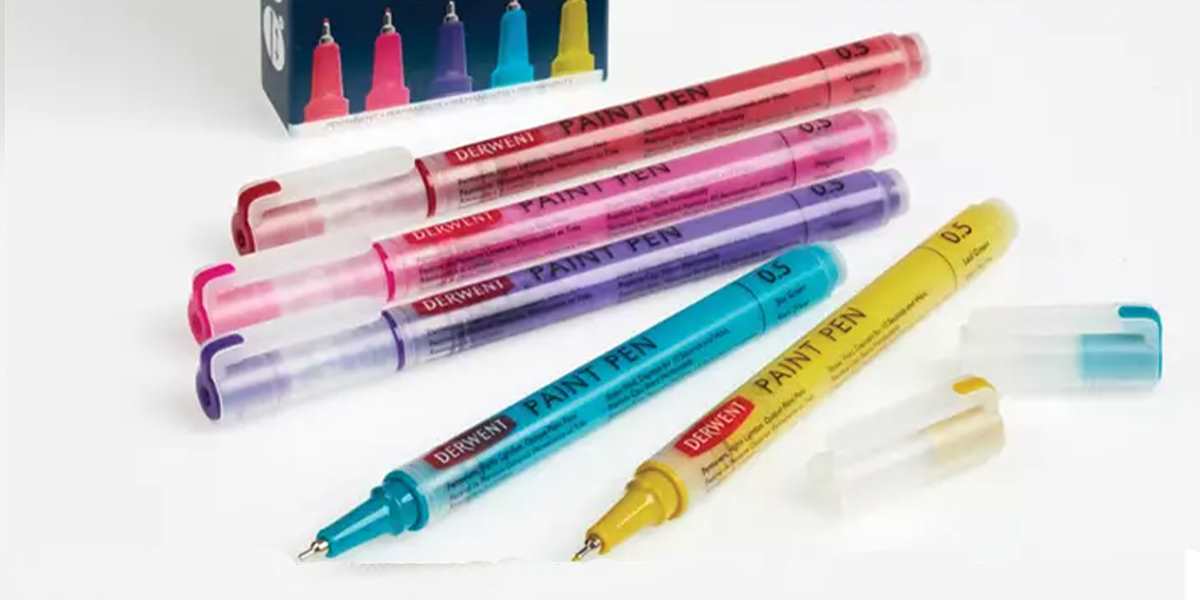

Waterproof vs Water-soluble
Waterproof pens – give the freedom to develop the wash without spoiling the line. Once dried the ink should be permanent and allows colour to be added. Waterproof pens may take longer to become fixed on the surface as they may appear dry but may not have fully cured to make the ink waterproof, so you may experience some smudging that is not fully cured when another layer of medium is added. The surface will also determine the drying and curing time for ink and it is worth testing to ensure that the ink is fixed when a wash is applied.
Water-soluble pens - Water can be washed across these inks and allows the ink to bleed and blend and mix. Depending on the colour and surface, you may still see the original mark made by the pen even after the water has been added to the blend. Once dried the inks are not permanent and subsequent layers may bleed into the previous one. Some water-soluble pens can also create wonderful new colours as the ink splits into different pigments.

Writing pens
A good writing pen needs to feel comfortable in the hand and glide smoothly on the paper. The choice of the pen depends on what writing style is to e achieve whether it is day to day note taking or letter writing or beautiful calligraphy.
A common writing pen is the Ballpoint pen and these are readily available. The ball point pen dispenses a viscous oil based ink over a small hard sphere or ball, as the ball rotates a thin layer of ink is released onto the surface. The first patent on a ballpoint pen was issued on October 30, 1888, to John J Loud but I was in 1938, László Bíró, a Hungarian newspaper editor, with the help of his brother George, a chemist patented the first commercially successful modern ballpoint pen.
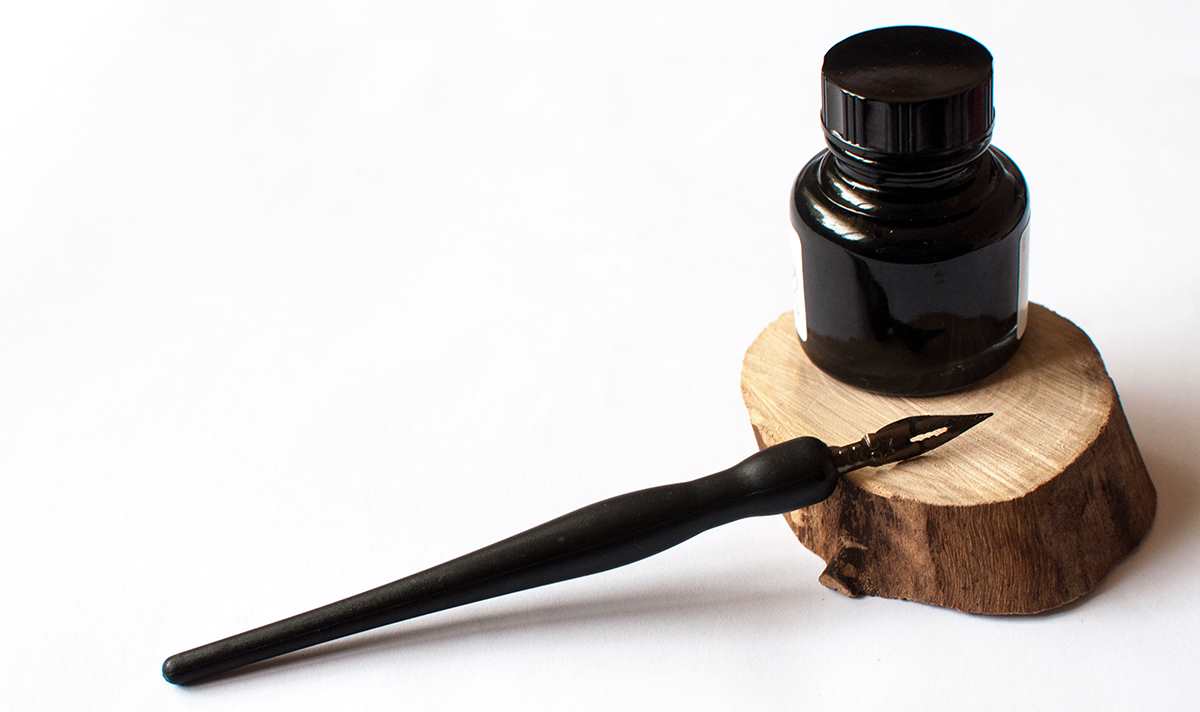

Rollerball pens
Rollerball pens were introduced by the Japanese company Ohto in 1963. Already producing a ballpoint pen they introduced a ballpoint pen using water based ink naming it a roller pen. Similarly, the Biro, uses a rolling ball and liquid ink to produce a smoother line. The ink used is water based which has a lower viscosity than the oil based Biro. The different ink means that more ink is released and it is absorbed into the paper more quickly resulting in a solid consistent line. They are designed to combine the convenience of a ballpoint pen and the smooth wet ink of a fountain pen/less pressure is needed. Rollerball pens are usually made from soluble dyes but pigment and are available in a wide range of colours.


Gel pens
Gel Pens are another form of roller ball pen, these pens contain water based ink or gel with pigment suspended in the solution. Patented in 1982 by Sakura Color Products They are creamy, quick drying, opaque ink pens that are usually available in fine nibs and because they contain opaque ink they can be used on coloured surfaces. The gel ink allows for the suspension of heavier pigment or mica so they can offer a big range of brighter colours and metallic, shimmering inks.
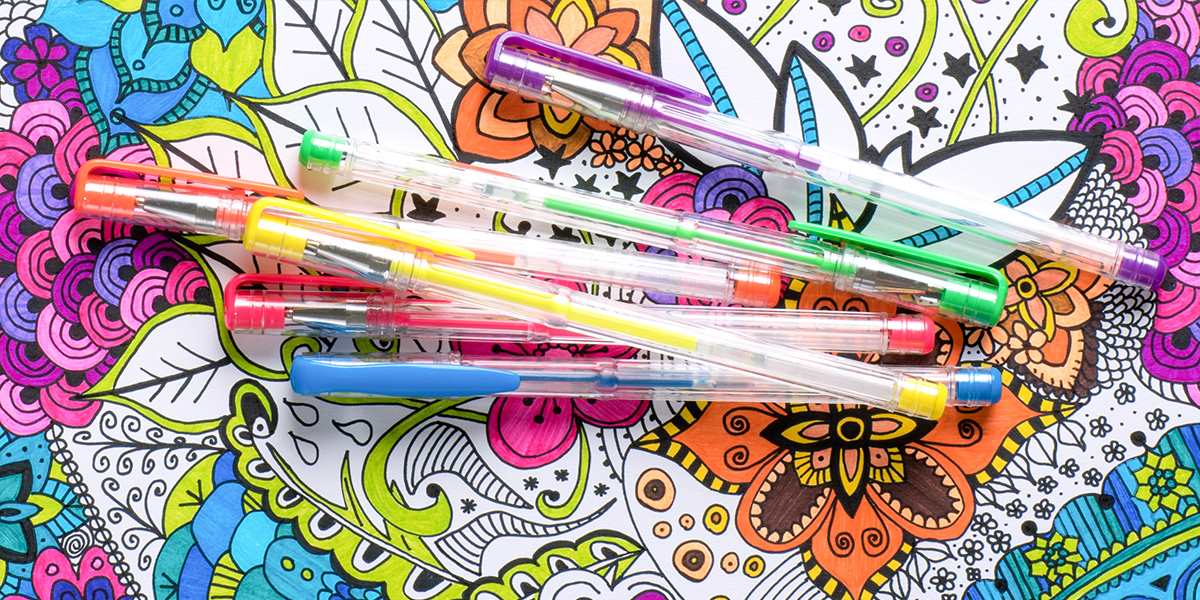

Calligraphy pens
Calligraphy (coming from the Greek word Kallos graphe) – means beautiful handwriting, the penmanship can range from letter writing to the beautifully illuminated calligraphy seen in old manuscripts. The principal tool for calligraphy is the pen, square or chisel-shaped nib, pen or brush. But modern pens like felt tips, brush pens, fountain pens, modern fibre tips or italic pens and ballpoints can also be used.
Dip pens are the simplest and most widely used which come in two parts - a pen holder and a nib. The different nib shapes can be slotted into the handle depending on the marks required. The nibs used in calligraphy are called ‘broad edged’ nibs. The standard shape is the ‘square cut’ nib used mainly by right hander and ‘left oblique’ nibs used by lefthanders.
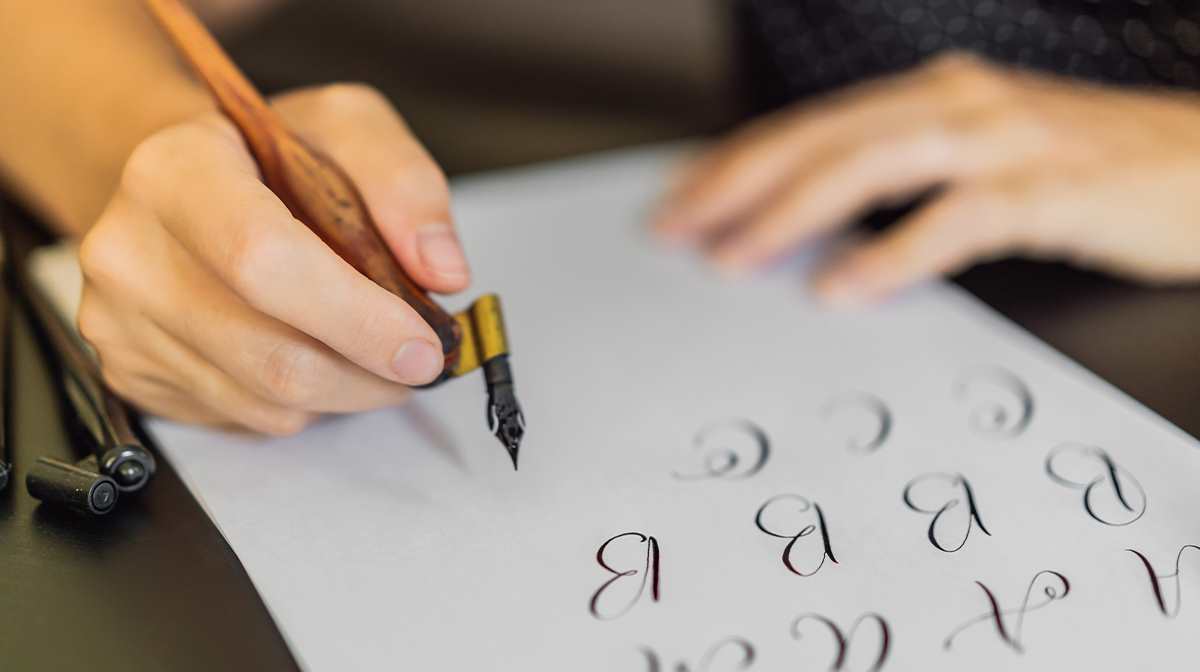

Fountain pens
Introduced in the late 19th century as an alternative to the dip pen, the fountain pens used a metal nib, originally made from gold which may still be used today, and an internal reservoir which can be refilled from an ink bottle or there are modern disposable ink cartridges. The water-based liquid ink flows through the mechanics of the pen and nib where the ink is delivered into the slit in the nib offering a smooth continuous line.
When filling a fountain pen from an ink bottle it is important to ensure that the ink is suitable for use in a fountain pen as incorrect ink will clog up the mechanisms. These can have different nibs from flat italic or a fine rounded nib. Left handed pens are available to accommodate the different directions in which a left handed scribe writes.


Felt Tip Pens
A popular colouring pen, these are a type of pen or marker with a tip made of porous, pressed fibres such as felt. The ink tends to dry out of the lid is left off and not replaced after use
- Waterproof inks and pens may take longer to become waterproof. It may appear dry but may not have cured fully to make the ink waterproof. You may experience some smudging in not fully cured when another layer of medium is added.
- The surface will also determine the drying and curing time for an ink
- As with anything test before using to find out how a pen works on the chosen surface, and how long it takes to be fully dry and cured before applying another layer.
- Test different paper when using the pen as you may experience bleeding or feathering on the different surfaces.
- Dye based pens are not designed to be lightfast. if you want to use and display look for pigment-based pens and inks.
These are only a few of the vast range of pens available on the market, each having its own characteristic. Dye based pens are perfect for sketching in a journal or sketch pad, lightfast pigment-based pens excellent for works which will be displayed, paint pens which can be teamed up with a brush for a different type of painting experience, to ultra-fine drawing pens for precision high spec detailed plans.


